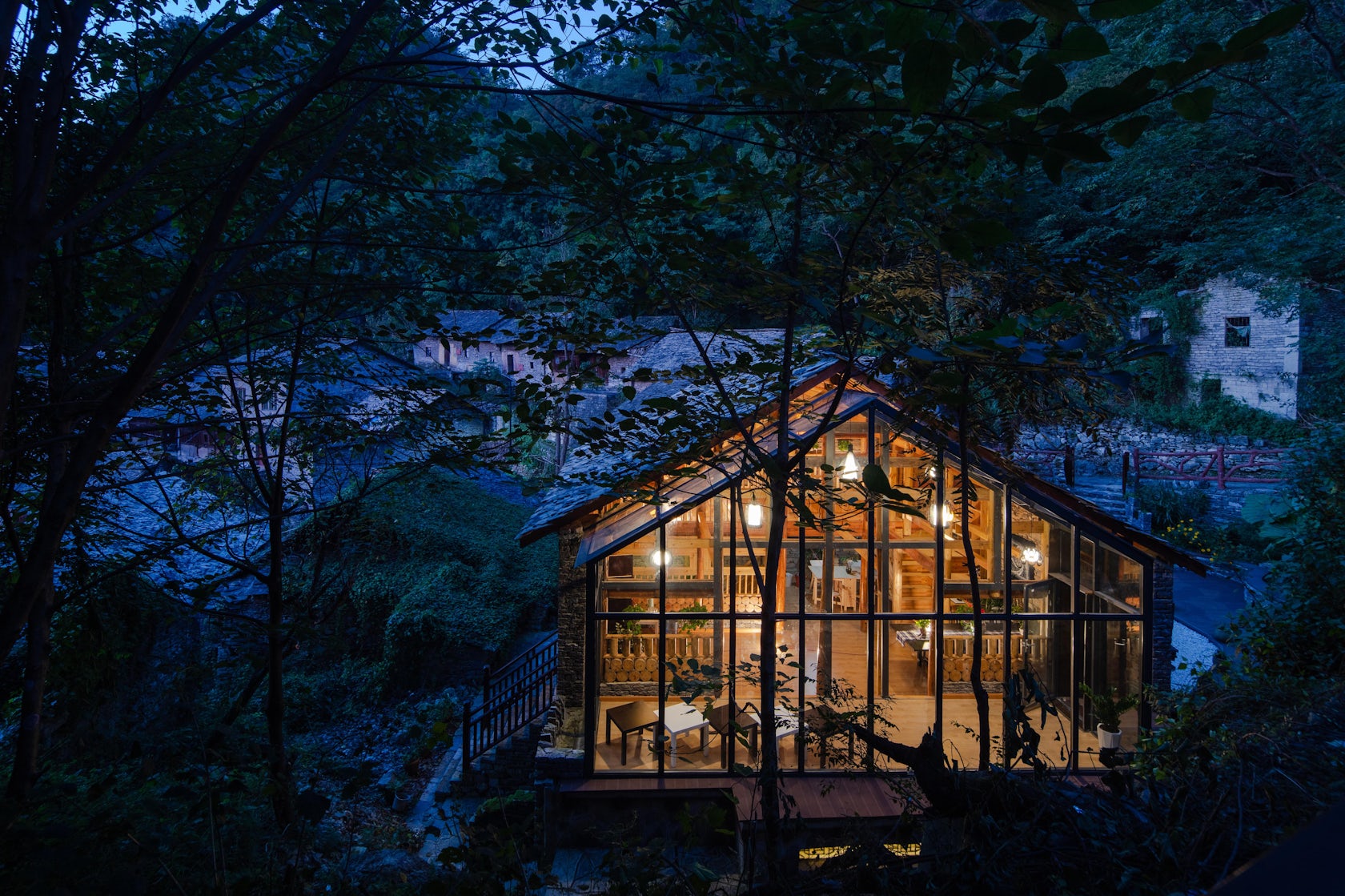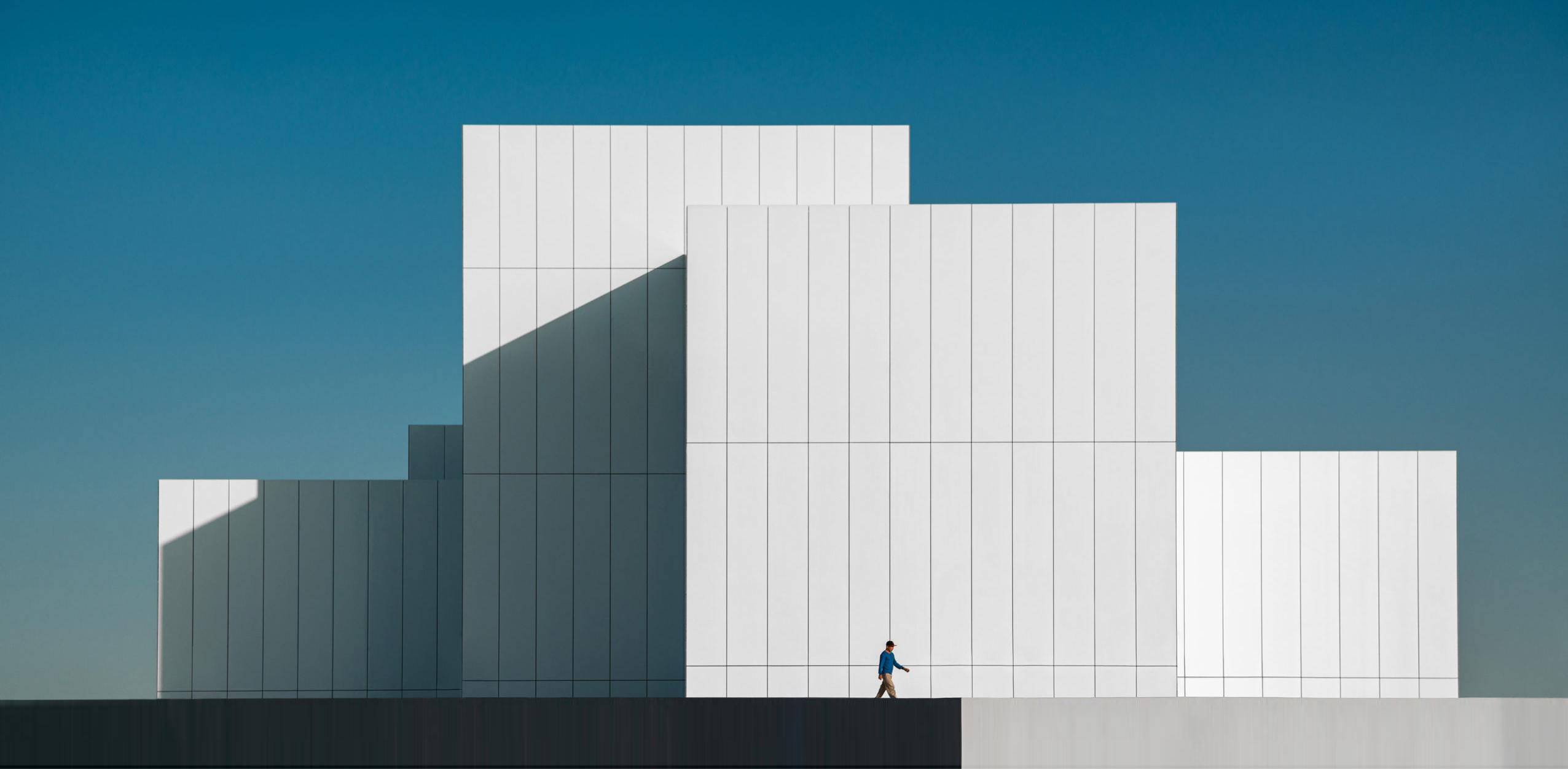Gaodang Buyi mountain village – Gaodang is a traditional village of Buyi ethnic minority group in remote impoverished mountainous area in the Chinese southwest province of Guizhou. A seven-year program has been implemented here with the goal of protecting Buyi cultural landscape, boosting community cohesion and strengthening regional economic and ecological sustainability by mean of landscape architecture. The program is rooted in the fragile karst ecosystem and village historical site, integrating the needs of modern life and the protection of traditional landscape. The long-term renovation and renewal process in Gaodang has united forces including scholar, landscape architect, indigenous people, the local craftsmen and design institute.
Architizer chatted with Zhengxu Zhou, Chief Designer at SHANCUN Atelier, School of Architecture, Tsinghua Univiersity, to learn more about this project.
Architizer: What inspired the initial concept for your design?
Zhengxu Zhou: Whole Village as Holistic Heritage. Gaodang village is the living heritage born from more than 600 years of farming and settlement activities of the Buyi ethnic minority. The ideal spatial pattern of Gaodang village reflects the unique locality and nationality of Buyi people, thus have significant heritage attributes. Therefore, the initial concept of this protection and rehabilitation is to regard the whole village as a holistic heritage.

© SHANCUN Atelier, School of Architecture, Tsinghua Univiersity
What do you believe is the most unique or ‘standout’ component of the project?
A conservation and regeneration program started in 2015 for more than 7 years, and is rooted in the fragile karst ecosystem and village historical site, integrating the needs of modern life and the protection of traditional Buyi culture. With the 7-year continuous work, this program was implemented in stages with the process of ” investigation – research – Consensus Building – Planning – Construction”. The completed work is a model of multi-party cooperation and communication, the awakening of cultural awareness of Buyi people and mutual trust between us. This work has been recognized nationwide as well.
What was the greatest design challenge you faced during the project, and how did you navigate it?
In recent years, Gaodang Village has faced problems including ecological degradation, disorderly construction, degradation of housing quality, especially the young going out and the built heritage being forgotten, leading to economy and society hollowing, and weakening of community cohesion. The situation was very complicated.
Based on sufficient investigation, long-term community participation and the establishment of consensus, since 2018, the team has applied multiple methods of planning, design, and policy from multidisciplinary perspective and multiple aspects. Through localized design and multi-parties participating in multi-stages, the cultural heritage is preserved.

© SHANCUN Atelier, School of Architecture, Tsinghua Univiersity
How did the context of your project — environmental, social or cultural — influence your design?
Gaodang Village is located in a karst basin of remote area in southwest China, which is a typical representation mountain village in the fragile eco-environment of karst terrain. Terrain fragmentation and inconvenient traffic have led to regional poverty and problem of rural hollowing.
The Buyi ethnic minority group has settled down here for hundreds of years, which is valuable part of multi-cultural society in this area. It has as gorgeous and colorful an ethnic culture as any other else. Although the isolated location and inconvenient transportation has resulted in the difficult life of the local people, their mountainous residential and cultivation culture are able to be well preserved.
Based on the context, it reformed three sets of relationships in protection and renewal: heritage and community, tradition and modern, nature and built environment.

© SHANCUN Atelier, School of Architecture, Tsinghua Univiersity
What drove the selection of materials used in the project?
Local materials such as limestone were made of maximum application during the construction process. It helped reduce the difficulty of building materials transportation in mountain areas, controlled and reduced project costs. Meanwhile, in this way, the unique landscape, style, and features of the Buyi village could be better preserved and renovated.
Native plants are frequently used during the restoration of the paddy-field wetland and forests, continuing the localism of the landscape. Also, native plants have the advantages of high survival rate and low planting and maintenance cost, which meet the requirements of economic sustainability in rural areas.

© SHANCUN Atelier, School of Architecture, Tsinghua Univiersity
How important was sustainability as a design criteria as you worked on this project?
This project paid attention to sustainable development in ecology, economy, culture, and other fields. Ecological restoration means such as the rehabilitating of abandoned paddy wetland and conservation of the karst forest are used to improve the thermal comfort of village, responding to global climate change. Meanwhile, the indigenous knowledge was used to enhance biodiversity. Local materials were made of maximum application to reduce project costs. Clean energy was used in dwellings and thermal performance of envelope structures is enhanced to reduce the usage of polluted energy. Meanwhile, the design enhances the internal cohesion and external attractiveness of the community leading to the development of homestays, farmhouse catering and agricultural products, and the income of villagers has increased. It helps achieve SDGs goals including economy and culture sustainability.

© SHANCUN Atelier, School of Architecture, Tsinghua Univiersity
In what ways did you collaborate with others, and how did that add value to the project?
Based on the consensus about the heritage and aesthetic values with villagers, this project has multilateral consultation and collaboration with local designers, government, and construction teams. The whole plan is completed based on multi-party cooperation, and implemented in stages with the process of “investigation and research — planning and design — publicity and promotion”. Voices of the vulnerable indigenous people were fully listened to. In addition, open democratic vote by villagers for future plan was carried out in the village to fully gather local people’s opinions and truly ensure the design is for the villagers.
Activities such as children’s research and learning, craftsman-training, seasonal agricultural sightseeing were carried out to help create jobs opportunities for the locals and to make sustained contributions for village economy.
How have your clients responded to the finished project?
The indigenous residents of different ages and occupation are generally satisfied with the project. In 2021, the villagers of Gaodang wrote a joint letter, giving feedback on this project. In letter, villagers say they have lived here for generations. For a long time before, the connection between the village and heritage had been weak, and past heroic epics had been forgotten. The project strengthened the connection. Many histories have been narrated to the young, which is very meaningful for its history and helpful to stimulate the inner cohesion and vitality of the village. During the implementation, their opinions were fully consulted, and local craftsmen worked with the engineering team that ensuring the high quality of construction. Now the village develop cultural tourism, many indigenous young people have returned for new business, and their income has been increased.
How do you imagine this project influencing your work in the future?
The team has established good cooperative relations with indigenous people, local government, and local enterprises, and the work here is still going on. In the future, the focus will be on the protection of Buyi’s cultural diversity, the sustainable transformation of Buyi traditional livelihoods, the further improvement of living conditions, and the overall conservation and development of the Valley, which promotes the sustainability of Buyi community and people’s well-being. Also, it has established a set of complete and standard process of “field survey – systematic research – planning and design – community implementation”, which has reference value for similar projects, especially for rural communities in Global South.
Credits
Chief designer: Zhengxu Zhou, SHANCUN Atelier, School of Architecture, Tsinghua University. Co-designer: Jicheng Feng, Anshun Institute of Architectural Design. Design participant from SHANCUN Atelier: Ziyu Jia, Mengyao Gao, Ziyan Pan, Yadi Yuan, Ning Zhu, Nian Wang, Ming Fang, Jiahui Li, Xinying Du, Chang Zhou, Ni Yan, Fengdie Li, Jiawei Liu, Tingting Huang, Yujie Lu, Yawen Luo, Xundi Wang, Zhiqiang Liu, Sijia Cheng, Weiqi Liu, Xiuzhu Li, Chao Xu, Zhao Zhou. Design participant from Anshun Institute of Architectural Design: Jie Hu, Xiaojing Huang, Rong Wang, Yong Wang, Chen Chen, Heng Gong, Kuan Zhang. Construction organizer: Keyu Peng, Jibiao Li. Photographer: Haohao Xu
For more on the preservation and rehabilitation of Gaodang Buyi mountain village, please visit the in-depth project page on Architizer.







 Preservation and rehabilitation of Gaodang Buyi mountain village
Preservation and rehabilitation of Gaodang Buyi mountain village 


